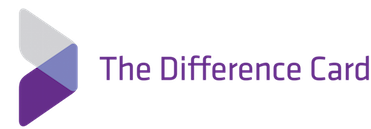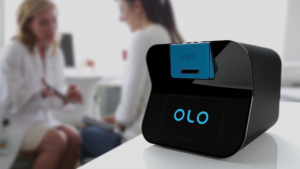The opportunity presented in fingerprick blood testing is one that many companies are chasing.
Among these is Israeli diagnostics firm Sight Diagnostics, which announced Wednesday that the Food and Drug Administration has cleared its Olo blood analyzer to perform a complete blood count(CBC) test on just two drops of blood. The complete blood count test –which calculates and characterizes the number of red blood cells, white blood cells, and platelets in a patient’s blood sample – is one of the most routine tests prescribed.
The clearance allows for fingerprick testing and the more traditional venous blood draws to enable complex testing using the Olo analyzer that can now be used in laboratories run by hospitals. The regulatory action was based on data from clinical trials run on the device that showed lab-grade results at Boston Children’s Hospital, Columbia University Medical Centre and Tricore Labs.
While in the U.S., the clearance is only for hospital lab use, in Europe the technology can be used more broadly. Sight Diagnostics has initiated a pilot program with a major U.K. health and beauty retailer — Superdrug — to bring blood testing to its health clinics.
In a phone interview from Israel, Sarah Levy, chief technology officer of Sight Diagnostics, said that the company has already received orders from U.S. hospitals but she declined to name them. Nicklaus Children Hospital in Miami is testing the device.
“Olo represents a major innovation in our laboratories’ CBC analysis: introducing finger-prick and venous sampling, five-part differential and flagging. It’s a truly welcome development,” said Dr. Steven Melnick, chief of pathology at Miami’s in a news release announcing the clearance. “At current volumes, we believe OLO will substantially reduce our costs.”
And reducing costs — aside from providing people a less painful alternative to venous blood draws and providing results in near real-time instead of having to wait days — has been the Holy Grail for all startups aiming to revolutionize the blood diagnostics market. By attacking costs, these companies are squarely taking aim at the hegemony of centralized lab companies like Quest Diagnostics and LabCorp. If this sounds familiar, you’ve heard it before with the failed Theranos, but this current crop of startups likely all believe that the defunct company was on a worthwhile mission that was undermined by fraudulent executives.
Back to costs, the 800-pound elephant in the room. Here’s how Sight Diagnostics’ Levy described why costs are such an important issue to tackle in the blood testing world:
The legacy instruments are very expensive. Those devices need constant calibration and has to be operated with trained technicians. These devices need to be connected to reagents so that they can be replaced. These systems are only cost-effective if you run thousands of tests per week. And the pricing model is very complex. You are not only paying for the machine, but there is the price of reagents, the price of controls, price of technical support, maintenance and calibration and so on. So the pricing model is very complex to realize the cost per test.
But many hospital department labs are not running thousands of tests per week, she said. They are running much lower volumes, thus making the Olo analyzer attractive.
“If you are running 20 or 25 tests per week, you are completely insane to pay this price,” Levy declared of legacy instruments.
By contrast, through a clinical study, Nicklaus Children’s Hospital in Miami projected that the use of the Olo analyzer for CBC would cut lab costs in half, Levy said.
The CBC test is the second test being on the Olo platform — the first was a malaria test for developing nations in Asia and Africa. Till date, Sight Diagnostics has sold nearly a million malaria of this test, Levy said.
So how does the platform work? Sight Diagnostics takes images of blood samples, thereby “digitizing blood” and then uses computer vision and deep learning algorithms the company has developed over 10 years to “analyzes those images as fast as they are being captured to identify the different components, to measure them to classify them and so on,” Levy explained.
Results are delivered on two drops of blood within 10 minutes.
Computer vision — hence the name Sight Diagnostics — is what is truly important and that is one reason the company’s press release announcing the FDA clearance steers clear of any mention of artificial intelligence.
“The actual thing is convolutional [neural] network, machine learning, computer vision — these are accurate terms to describe what we are doing and AI is much more general and high-level, so it sounds more like a buzzword,” Levy said.
As mentioned above, there are several diagnostics startups that are all trying to make blood testing more accessible, less painful, and less costly. In Sight Diagnostics’ own backyard, there is PixCell Medical Technologies, which has received FDA clearance for its CBC test but is not currently being sold in the U.S., both according to Levy and the company’s website.
In the Bay Area is Athelas, whose point of care testing device — also premised on machine learning and computer vision — has been cleared by the FDA for producing white blood cell count and neutrophils in a point-of-care setting.
Others seeking FDA clearance are Truvian Sciences and Genalyte, with the latter’s technology currently being reviewed by the agency.
For Sight Diagnostics, which has raised $56 million from investors, the FDA clearance allowing the use of Olo in clinical lab settings is simply the first step.
“Our next step for the United States is to seek a CLIA waiver so our future plan for our product is to get to pharmacies and clinics and GP practitioners in the U.S. but that’s the next phase,” Levy said.
And the company fully intends to publish data in peer-reviewed journals on the CBC test just like it has for the malaria test, Levy said.
Photo: Waldemarus, Getty Images and Sight Diagnostics













